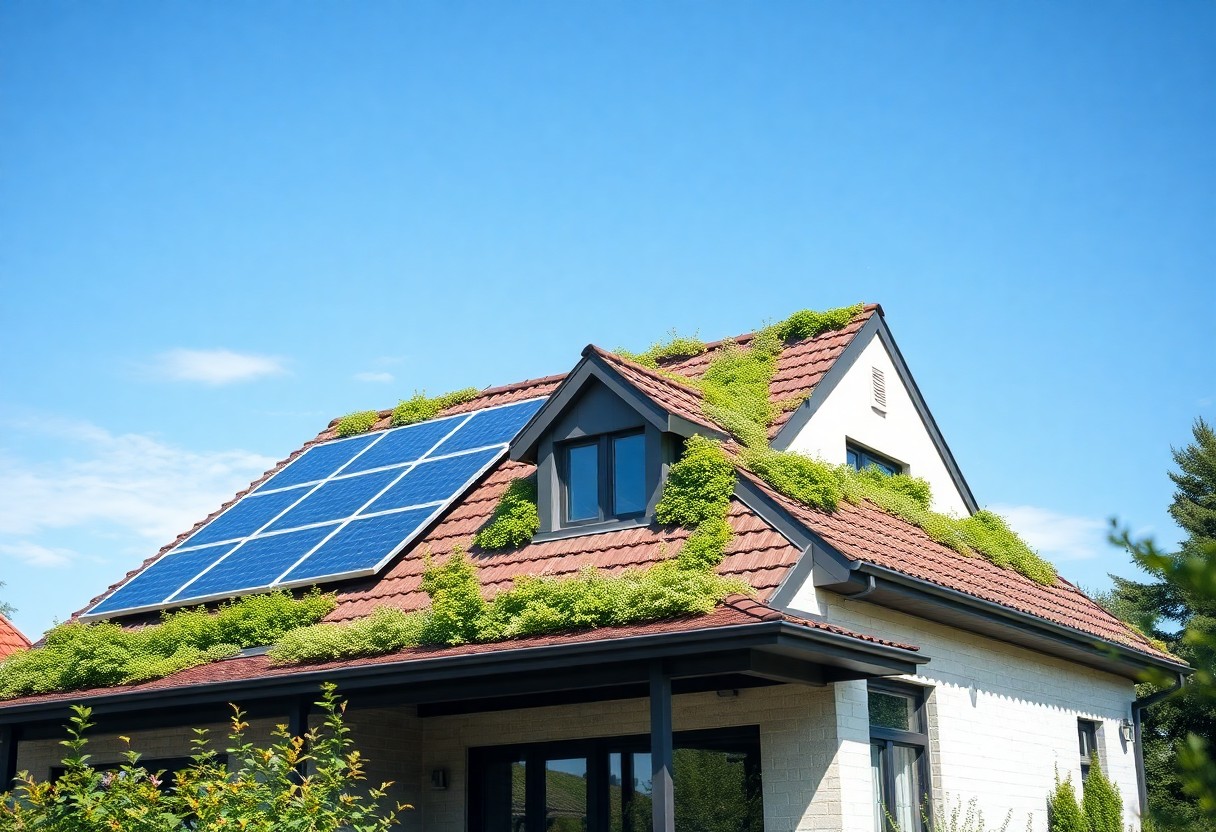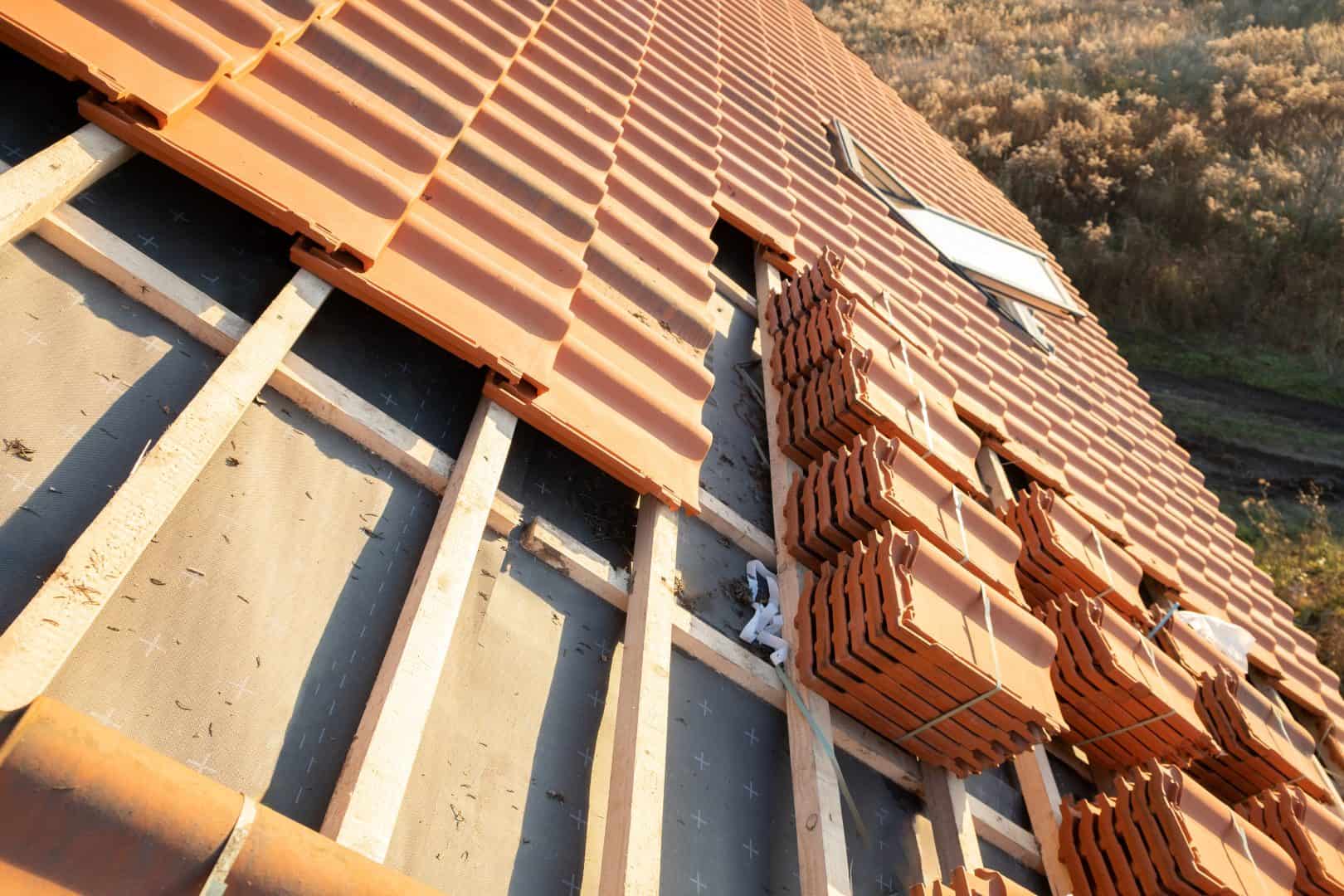Are there energy-efficient roofing options?
Fill Out The Form And We'll Get Back To You

Efficient roofing options can significantly enhance your home’s energy performance while reducing your utility bills. With various materials and technologies available today, you have the opportunity to improve insulation and reflect sunlight, thereby minimising heat loss in winter and keeping your home cooler in summer. In this post, we explore the array of energy-efficient roofing solutions that can suit your needs, making your property not only more comfortable but also environmentally friendly.
Key Takeaways:
- Reflective Roofing Materials: Using materials that reflect sunlight can significantly reduce cooling costs by keeping buildings cooler.
- Insulation: Adequate insulation in roofing systems improves energy efficiency by minimising heat loss during colder months.
- Green Roofs: Installing green roofs can provide thermal insulation, reduce urban heat, and manage stormwater, contributing to overall energy efficiency.
Understanding Energy-Efficient Roofing
While the roofing system of your home plays a vital role in energy efficiency, it is often overlooked. Integrating energy-efficient roofing options can significantly reduce your energy consumption and enhance the overall comfort of your living space. By understanding the types and benefits of these roofs, you can make informed decisions that not only lower your bills but also contribute positively to the environment.
What is Energy-Efficient Roofing?
About energy-efficient roofing, it refers to roofing materials and designs that reflect more sunlight and absorb less heat than standard options. By improving thermal insulation and incorporating sustainable materials, these roofs help maintain a stable indoor temperature, reducing your reliance on heating and cooling systems.
Benefits of Energy-Efficient Roofing
Understanding the benefits of energy-efficient roofing can lead you to significant long-term savings and improved home comfort. These roofing options can lower your energy bills, enhance the lifespan of your roof, and increase your property’s value, making them a wise investment for any homeowner.
For instance, when you choose reflective roofing materials, you might notice a reduction in cooling costs, especially during the sweltering summer months. Additionally, some energy-efficient roofs come with warranties that last longer than conventional roofing materials, giving you peace of mind. By investing in these options, you can also contribute to a greener planet by decreasing your carbon footprint through lower energy consumption.
Types of Energy-Efficient Roofing Materials
Assuming you are considering roofing options, various materials can enhance your home’s energy efficiency. Here are some options to explore:
| Metal Roofing | Highly reflective and often made from recycled materials. |
| Slate | Natural stone that offers longevity and insulating properties. |
| Tile Roofing | Clay or concrete tiles provide natural ventilation. |
| Cool Roof Coatings | Reflective materials that reduce heat absorption. |
| Green Roofs | Lush vegetation that offers insulation and natural cooling. |
After exploring these materials, you can discover more about available options in the article on 7 Energy-Efficient Roofing Options that Save You Money.
Cool Roofing Options
An excellent way to improve energy efficiency is by considering cool roofing options. These roofs are designed to reflect more sunlight and absorb less heat, keeping your home cooler during warmer months. They come in various materials, including reflective single-ply membranes and certain types of shingles, which can drastically lower your energy costs.
Sustainable Roofing Materials
After contemplating the advantages of energy-efficient options, you may also want to explore sustainable roofing materials. These materials are designed not only to be eco-friendly but also to enhance your roof’s energy efficiency through better insulation and durability.
EnergyEfficient roofing materials play a significant role in reducing your carbon footprint while saving on heating and cooling costs. By selecting sustainable choices, such as recycled metal, bamboo shingles, or even living green roofs, you contribute to a healthier environment and create a more comfortable living space. They are long-lasting and often require less maintenance, making them a smart investment for your home.
Factors to Consider When Choosing Roofing
Unlike many might think, selecting the right roofing requires careful consideration of several factors that could impact your energy efficiency. These may include:
- Material type
- Insulation properties
- Durability and maintenance
- Climate compatibility
This ensures you choose a roofing option that maximises energy efficiency while meeting your specific needs.
Climate and Location
Roofing materials can significantly influence your home’s energy efficiency depending on your climate and location. For instance, if you live in a hot area, light-coloured roofing can reflect sunlight and reduce cooling costs. Conversely, if you reside in a colder region, materials with good insulation properties may help retain heat. Understanding your local weather patterns will help guide your decision.
Cost and Lifespan of Roofing Materials
When considering roofing, you should evaluate both the initial costs and the lifespan of various materials. Investing in high-quality roofing can prove more economical over time, as durable materials often require less maintenance and replacement.
It is crucial to consider both the upfront expenditure and the long-term financial implications. Some materials might seem cost-effective initially but can incur high replacement and maintenance costs. Conversely, investing in premium roofing options may yield savings over the years with increased durability and energy performance. Opting for roofing that complements your home’s style while providing economical benefits is vital for ensuring your satisfaction in the long run.
Installation and Maintenance
Many homeowners overlook the significance of proper installation and maintenance when considering energy-efficient roofing options. Ensuring that your roof is appropriately installed not only maximises its energy-saving benefits but also prolongs its lifespan. Routine maintenance is equally important, as it helps to identify and address minor issues before they develop into costly repairs, ensuring your investment remains secure and beneficial.
Professional Installation vs. DIY
Along with choosing the right materials, the method of installation is key to achieving energy efficiency. While DIY projects can appear tempting and more economical, hiring professionals can provide you with peace of mind that the installation meets necessary standards. Skilled installers will ensure proper fitting and sealing, which can significantly impact your roof’s performance.
Maintenance Tips for Energy-Efficient Roofs
An effective routine for maintaining your energy-efficient roof can enhance its performance over time. Regularly check for debris or dirt accumulation that may obstruct ventilation and increase heat retention. Consider these tips for optimal upkeep:
- Clear gutters and downspouts to prevent water damage.
- Inspect for damages, such as missing or broken shingles.
- Trim overhanging branches to reduce shading and allow sunlight in.
- Schedule professional inspections at least once a year.
After following these suggestions, you will be well on your way to extending your roof’s life and maximising its energy efficiency.
Maintenance of your energy-efficient roof is necessary for sustaining its benefits. Look out for signs of wear and tear, such as loose tiles or cracks, and address them promptly. Consider incorporating the following practices:
- Regularly apply roof coatings to increase reflectivity.
- Ensure insulation and ventilation systems are in excellent condition.
- Monitor energy bills for unexpected increases that may indicate roof issues.
- Document repairs and inspections for a complete maintenance history.
After establishing these maintenance habits, you create a robust foundation for a long-lasting and efficient roofing system.
Impact on Energy Bills and the Environment
Not only can energy-efficient roofing options significantly reduce your energy bills, but they also contribute positively to the environment. By choosing materials that reflect sunlight and improve insulation, you can decrease your reliance on heating and cooling systems, lower energy consumption, and ultimately minimise your carbon footprint.
Reduced Energy Consumption
Energy efficiency in roofing means less energy is needed for cooling in summer and heating in winter. This reduction in energy consumption directly translates to lower utility bills, allowing you to save money while staying comfortable in your home.
Environmental Benefits
Along with cutting your energy costs, energy-efficient roofing plays a vital role in reducing greenhouse gas emissions. When you consume less energy, the demand for fossil fuel-based electricity diminishes, contributing to a healthier planet.
Plus, many eco-friendly roofing materials are often made from recycled or sustainable sources, further decreasing environmental impact. By opting for energy-efficient options, you not only enhance your home’s performance but also support a more sustainable future for your community and the planet.
Case Studies and Real-Life Examples
Once again, examining real-world applications can illuminate the effectiveness of energy-efficient roofing options. Notable case studies include:
- 1. A residential home in California with a cool roof that reduced energy bills by 20% over one year.
- 2. A commercial building in New York using green roofing systems, resulting in a 30% reduction in heating and cooling costs.
- 3. Installation of solar panels on a roof in Texas that generated 70% of the building’s energy needs annually.
- 4. A hotel in Florida that chose reflective shingles, leading to a significant decrease in indoor temperatures and energy use.
For further insights, you can check out What is the Most Energy-Efficient Type of Roof?.
Residential Success Stories
Around the globe, homeowners have seen remarkable benefits from energy-efficient roofing. One example includes a family in the UK who chose a slate roof with excellent insulation, slashing their heating costs by nearly 25% during winter months while increasing their home’s overall value.
Commercial Applications
At the corporate level, businesses are increasingly adopting eco-friendly roofing solutions. A notable case is a manufacturing plant in Germany that incorporated green roofing technology, which not only improved energy efficiency but also contributed to biodiversity by supporting local flora and fauna.
In fact, many companies are recognising that investing in energy-efficient roofs can significantly lower operating costs and enhance corporate image. This approach not only demonstrates a commitment to sustainability but also offers long-term savings, improving the bottom line while fulfilling environmental obligations.
Summing up
Drawing together the insights on energy-efficient roofing options, you can enhance your home’s sustainability while potentially reducing energy bills. By selecting materials like metal, slate, or reflective shingles, you not only improve insulation but also promote better energy conservation. It’s wise to consider the right choices for your climate and personal needs, as these options offer long-term benefits. Investing in energy-efficient roofing is a proactive step towards a more eco-friendly lifestyle and increased property value.
FAQ
Q: What are the benefits of energy-efficient roofing options?
A: Energy-efficient roofing options provide several advantages, including reduced energy bills, enhanced comfort within the home, and a positive impact on the environment. These roofs are designed to reflect more sunlight, thus reducing heat absorption and keeping the interior cooler. As a result, homeowners may rely less on air conditioning, leading to lower utility costs. Additionally, many energy-efficient materials are sustainable and can contribute to lowering a home’s overall carbon footprint.
Q: What types of materials are considered energy-efficient for roofing?
A: There are various materials that qualify as energy-efficient for roofing. Metal roofs, for instance, are excellent at reflecting sunlight and can be coated with special reflective pigments to enhance their efficiency. Cool roofing materials, such as reflective shingles, are also popular choices. Tile roofs and slate roofs can be energy-efficient due to their natural thermal properties. Furthermore, energy-efficient insulation integrated into the roofing system can significantly improve overall performance.
Q: How can I determine if a roofing option is energy-efficient?
A: To determine if a roofing option is energy-efficient, look for materials that have a high Solar Reflectance Index (SRI) rating. Products that meet ENERGY STAR® qualifications are a good indicator of efficiency. Consulting with roofing professionals who are knowledgeable about energy-efficient materials can also provide insights. It’s important to consider factors like the colour of the roofing material, its ability to insulate, and any reflective coatings that may be applied.
Re-Roofing of House
The guys made a fantastic job of replacing the roof recently. They were fast, relaible and efficient. The work was carried out in a double-quick time.
Fascias and Soffits
We employed Wrights Roofs to replace the fascias, soffits and gutters that had been on the house since it was new. They carefully removed and replaced it all. Really impressed.
New Roof
We had an extension built and Wrights came and put a new roof on. They were excellent, no fuss, great value for money. Thank you.
Roofs, Flat Roofs Chimneys and Solar Panels
If you need roof work on your home, please complete the form or call us today.

